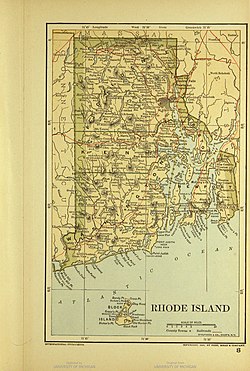
Rhode Island’s history is shaped by successive waves of migration that have profoundly influenced its demographic composition, economic development, and cultural identity. Indigenous peoples, such as the Narragansett, Wampanoag, Niantic, Pequot, and Nipmuc,[1] occupied the region long before European settlement, establishing vibrant communities and trade networks. Beginning in 1636, settlers from Massachusetts Bay Colony—most notably English Puritan dissenters—arrived in the Providence Plantations seeking religious freedom. Over time, Rhode Island’s ports, industrial centers, and agricultural areas drew additional groups from across Europe, Africa, and the Americas, each contributing unique traditions, labor, and cultural perspectives. Forced migration through the transatlantic slave trade left a complex legacy, while voluntary migrations—from Irish and Italian laborers to Southeast Asian and Latin American communities—continuously reshaped the state’s urban and suburban landscapes.
Research your ancestors on MyHeritage
List of Rhode Island historic migration routesList of Rhode Island historic migration routes
| Time Period | Ethnic Group | Origination Location | Arrival Location | Motivating Factors |
|---|---|---|---|---|
| Pre-Colonial (prior to 1636) | Narragansett, Wampanoag, Niantic, Pequot, Nipmuc | Indigenous to the region | Present-day Rhode Island (tribal lands) | Longstanding settlement of ancestral homelands; subsistence, cultural continuity |
| 1636–1700 | English (Puritan dissenters) | Primarily from Massachusetts Bay Colony (also England) | Providence Plantations, Newport | Religious freedom (escape from stricter Puritan Massachusetts) |
| 17th–18th centuries (mid to late colonial period) | English, Scots, Scots-Irish, and enslaved Africans | Various parts of Great Britain; West Africa (via slave trade) | Coastal ports (Providence, Newport), rural plantations | Maritime commerce, agricultural opportunities, forced migration (enslaved Africans) |
| 18th–early 19th century | African Americans | West Africa, the Caribbean (through enslavement), other colonies | Plantations, coastal towns | Forced migration (slavery), later manumission and gradual emancipation |
| Early–mid 19th century | Irish | Ireland | Urban centers (Providence, Pawtucket, Woonsocket, Newport) | Escape from Great Famine (1845–1852), jobs in mills and construction |
| Late 19th–early 20th century | French Canadians (Québécois) | Quebec, Canada | Woonsocket, Central Falls, Pawtucket | Employment in textile mills, economic opportunity |
| Late 19th–early 20th century | Italians | Southern Italy (including Sicily, Calabria, Campania) | Providence (Federal Hill), other industrial cities | Economic opportunity in construction, factories, and small businesses |
| Late 19th–early 20th century | Portuguese (including Azoreans and Madeirans) | Mainland Portugal, Azores, Madeira | Providence area, East Providence, Bristol | Maritime trades (fishing, whaling), textile work, better living conditions |
| Late 19th–early 20th century | Polish | Partitioned Poland | Industrial centers (Central Falls, Pawtucket, Providence) | Mill and factory jobs, chain migration |
| Early–mid 20th century | African Americans (Great Migration) | Southern United States | Providence, Pawtucket, other urban areas | Escape from Jim Crow laws, industrial employment opportunities |
| Mid-20th century (post-WWII) | Jewish communities | Europe (Holocaust refugees), New York City | Providence, Cranston, Warwick | Post-war resettlement, family reunification, economic prospects |
| Post-1970 | Southeast Asians (Vietnamese, Cambodian, Laotian, Hmong) | Southeast Asia (Vietnam, Cambodia, Laos) | Providence metropolitan area | Refugee resettlement post-Vietnam War, political upheaval |
| Late 20th century–present | Dominican, Puerto Rican, Colombian, Guatemalan, and other Latin American groups | Dominican Republic, Puerto Rico, Colombia, Guatemala, etc. | Providence, Central Falls, Pawtucket | Economic opportunities, family reunification, establishment of ethnic communities |
| Late 20th century–present | Cape Verdean, Liberian, Nigerian, and other African immigrants | Cape Verde, Liberia, Nigeria, Ghana, various African nations | Providence, Pawtucket, East Providence | Political instability, economic opportunity, family ties |

